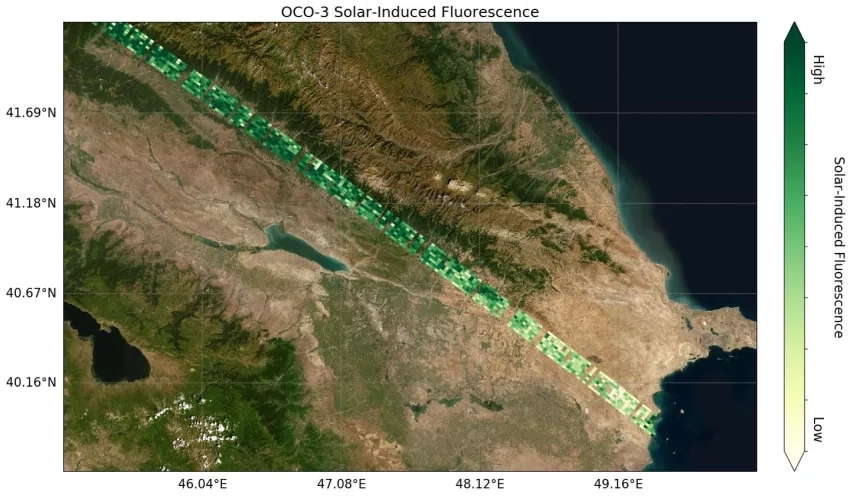On March 16th, 2021, the Applied Remote Sensing Training Program (ARSET) will be holding a live introductory webinar on measuring and monitoring changes in vegetation using solar-induced fluorescence and LiDAR. The training will be bilingual (English and Spanish) and feature guest speakers Christian Frankenberg, Philipp Koehler and Karen Yuen from the California Institute of Technology, Jet Propulsion Laboratory. This training also introduces new sensors for assessing vegetation characteristics (e.g. height through LiDAR) and health (e.g. photosynthetic activity through SIF) that allow for understanding the changes that occur in plants after droughts, fires or other stressful events.
Solar-induced fluorescence or SIF is an innovative measurement that serves as a proxy of plant photosynthetic activity. When plants absorb white light from the sun, they initially absorb light across the entire spectrum. When photosynthesis occurs, some of the unused energy absorbed from the sun is emitted as heat and a red glow, or SIF. “The first recorded observation of solar-induced fluorescence (SIF) was made almost two centuries ago when Sir David Brewster, a Scottish preacher, discovered that a beam of sunlight striking a green alcoholic extract of laurel leaves elicited a brilliant red light (Brewster, 1834).” (Mohammed, et al., 2019). This is normally invisible to the human eye, but if you were to take a blue flashlight and wear a pair of red glasses, and shine the light on a plant in a dark room, you would actually be able to see the red glow being emitted from the plant’s photosynthetic process (see an example here).
Amazingly enough, this signal can also be observed from space. You may be familiar with NDVI, or normalized difference vegetation index, which has been the go-to measurement for assessing vegetation health in remote sensing for years. NDVI is essentially a “greenness” index. SIF goes one step further and actually provides a read on a plant’s photosynthetic process, rather than just relying on visible changes. SIF has been shown to correlate strongly with gross primary productivity, or GPP (Helm, et al. 2020). With SIF, instead of observing outward signs of change to an event, we are observing the plant’s physiological response to it. This can be useful in a variety of ways, including measuring changes in vegetation after being exposed to stressors such as natural disasters and droughts.
If you would like to learn more about measuring vegetation characteristics and health with SIF and LiDAR, we hope you will join us on the 16th. You can register at one of the links provided below. Those who attend all four live sessions and complete the homework assignment will receive a certificate of attendance.
Link to Register (English): https://appliedsciences.nasa.gov/join-mission/training/english/arset-use-solar-induced-fluorescence-and-lidar-assess-vegetation
Link to Register (Spanish): https://appliedsciences.nasa.gov/join-mission/training/spanish/arset-el-uso-de-la-fluorescencia-inducida-por-el-sol-y-lidar-par




